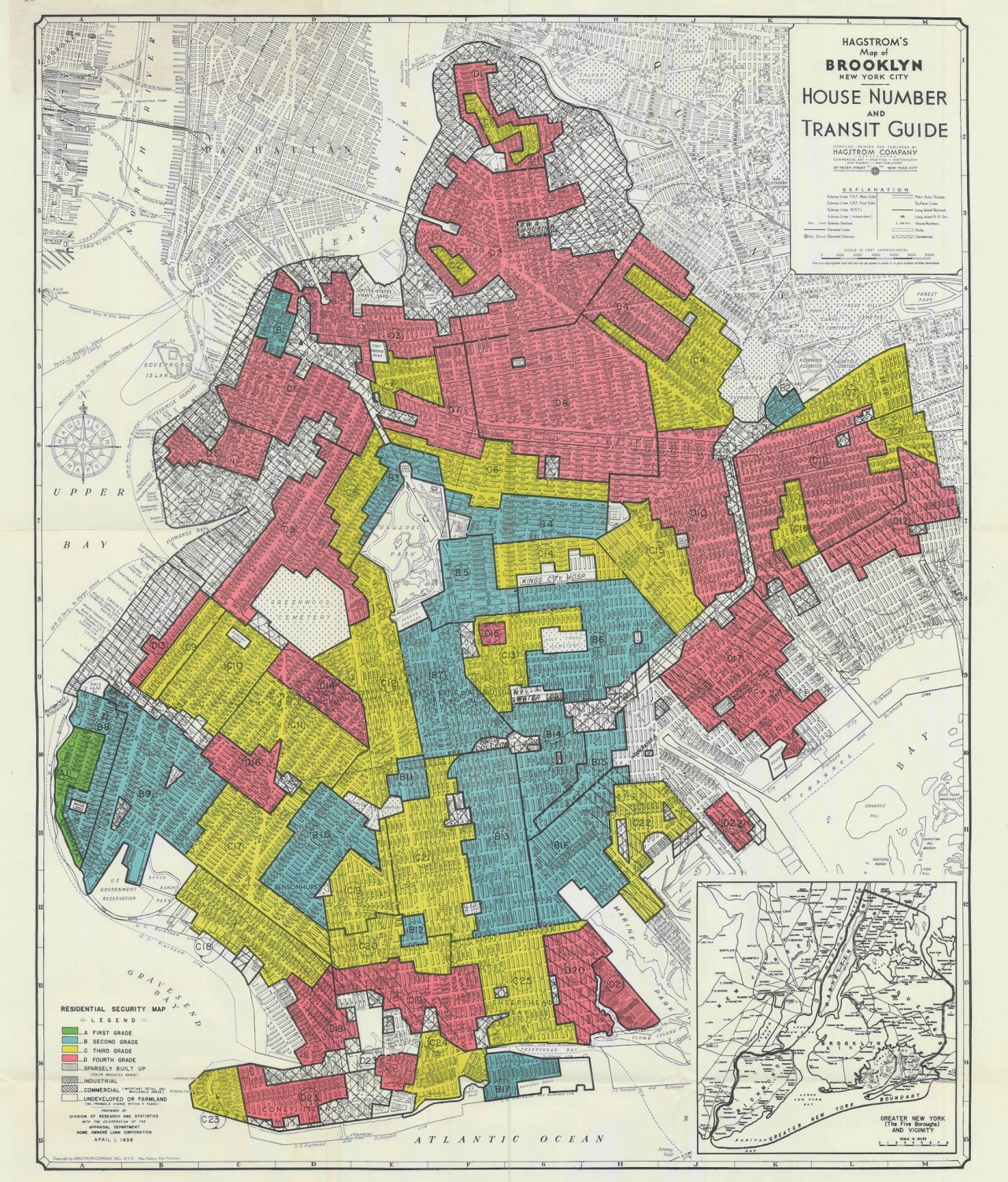Throughout history, there have been policies of economic segregation put in place to uphold power structures of race and class. In this post, we're taking a look at the impact of redlining in the US, and the pardner system that sprung up amongst Carribean communities here in the UK.
Redlining
Redlining was a practice where banks, insurance companies, etc., refuse or limit loans, mortgages, insurance, etc., within specific geographic areas, especially inner-city neighbourhoods. These neighbourhoods were predominantly Black, but also Catholic, Jewish, Asian and Southern European - whose communities were deemed undesirable.
Although redlining was banned almost 50 years ago in the USA with the Fair Housing Act, it still affects minority communities today. It has continued to shape the wealth patterns of communities, with studies showing a direct link between redlined communities struggling economically, almost 80 years later.
A history of redlining

An example of a redlined map in the USA: the 1938 Home Owners’ Loan Corporation map of Brooklyn. (Credit:National Archives and Records Administration, Mapping Inequality).
The term “Redlining” was coined by sociologist John McKnight to describe how discriminatory banks were in making investment decisions based on communities. In the 1930s, the US government surveyors introduced a grading system of 293 cities - colour-coding them green (best), blue (still desirable), yellow (definitely declining) and red (hazardous). The “redlined” areas were the ones classed as credit risks, mainly due to race.
Loans in these areas were made unavailable or expensive, making it more difficult for low-income minorities to purchase homes, and starting the US racial wealth gap. According to the Federal Reserve, white families have nearly 10x the worth of Black families, and more than 8x of Hispanic families.
The effects of redlining
Property is an asset - it holds value and can be passed down to future generations. Similarly, loans are important, and help create a first business - both provide investments.
The system of redlining worked against property and business goals, by creating communities of undesirable properties. Redlined areas became stigmatised as “hazardous” neighbourhoods and lacked health, education and community services.
Health in America equals wealth - because of the lack of healthcare in redlined areas, this had a knock on effect of having communities with clean air, clean water and outdoor spaces. This also reduced the investments into areas to support these things, and adding to the growth of wealth (good schools, access to healthy food, transportation).
A Black family’s investment into a property in a redlined area, could potentially decline the longer they lived there, as the community has little to no investments. But, a white family’s property would continue to increase in value over time, as the community investment increases. This then affects future generational wealth, and reduces the value of the Black family's property over time. Having generational wealth often provides a head start in life, studies and statistics show.
The legacy of redlining
Valerie Wilson, director of the Economic Policy Institute’s program on race, ethnicity, and the economy said “Black and Hispanic households see larger percentage gains simply because they were starting from a lower level.” Some other facts include:
The median net worth of whites remains nearly 10 times the size of Blacks'.
Nearly 1 in 5 Black families have zero or negative net worth — twice the rate of white families.
Black and Hispanic families have far less money than whites to begin with, so any bump as a result of the nation’s economic recovery would appear to be disproportionately large.
60% of white families reported having retirement savings - double the rate of Black and hispanic families. White families are 2x as likely to own a business.
Redlining has played a massive part in the racial wealth gap we still see in the US today. To recover from the wealth gaps economic allyship, like supporting/participating in Black Pound Day will definitely help.
Meanwhile, in the UK: the Pardner scheme
In the UK, Caribbeans realised that it was difficult to get credit services from banks and it wasn't as easy to get houses, cars, loans or other investments. Although the Black community was feeling the divide, especially coming to the UK after Windrush, they were also very determined to build themselves up, as a community, and the pardner scheme was created.
How the pardner saving system works
A group of people hand over a set amount of money to the 'banker', over a certain amount of time (usually weekly or monthly), this is called putting in a 'hand'. Each person collects the funds from the banker, called a 'draw' until everyone has had a turn. Sometimes, if there's a specific date you'd like the money for, you can request this from the banker before joining.
For example, if there's 10 people in a pardner, and the hand amount is £100 per month, it will run for 10 months and the draw is £1,000. The key is having trust in the people you've joined the pardner with, to hand over money to the banker, and know you'll get it in return.
It's a great way to collect a large amount of savings in a short time frame, where traditional banks wouldn't lend. The funds could be used with the individuals discretion - either to purchase a car, a house, for children's education, retirement, etc.
Does the pardner system work?
Yes, if there's trust. A lot of Caribbeans did it, and still do.
As a personal reference, my parents did it with their friends, as a way to save money. My grandparents did, too. Although, across the Caribbean, it's known by different names - Pardner is the Jamaican name for it, in Grenada, it's called Sou-Sou. It's also known in Asian communities and African communities by different names, too.